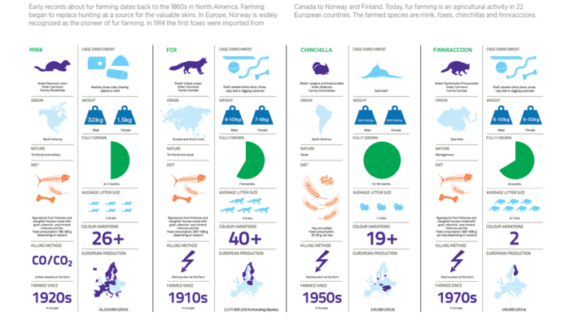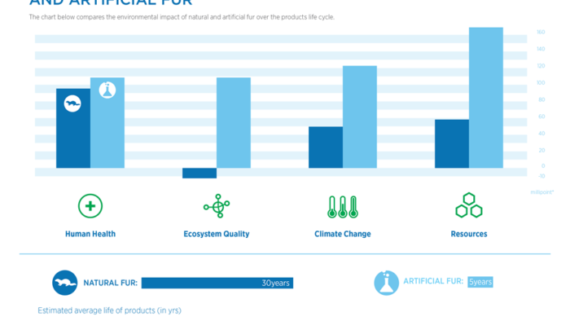Articles & resources
Early records about fur farming dates back to the 1860’s in North America. In Europe, Norway is widely recognised as the pioneer of fur farming. See other statistics concerning farmed species such as mink, fox, Chinchilla and Finnraccoons.
Comparison of the environmental impact of natural and artificial fur over the products life style.
During the international fashion weeks in Milan, Paris, London & New York in early 2014, fur was featured on the catwalk in more than 2/3 of the collections.
The Code of Best Practice is a standard developed with the support of Fur Europe for the purpose of creating a common ground in chinchilla breeding practice throughout Europe.
Download full document … Read More
For e-commerce to become relevant for SMEs trading with fur it is essential that the EU institutions set clear rules, remove bureaucratic burdens, and create a balanced business environment for consumers and retailers as well.
Download … Read More
In this review of scientific literature the author answers to the domestication status of the farmed mink: “There is therefore not the slighted doubt any more as how to answer the question, namely with an unequivocal yes, minks are domesticated, on a morphological, physiological, genetic and … Read More
This published scientific paper describes the development of the WelFur protocols for foxes and mink. The WelFur programme is based on the principles and criteria of the Welfare Quality project. Funded by the European Commission, Welfare Quality is a European research program designed to develop European … Read More
A Pan European survey conducted by the independent market research company Ipsos shows significant differences in the level of acceptance of fur farming throughout Europe
European men an women’s feelings and opinions about fur and fur farming differ in quite a few areas.
 English
English Română
Română










